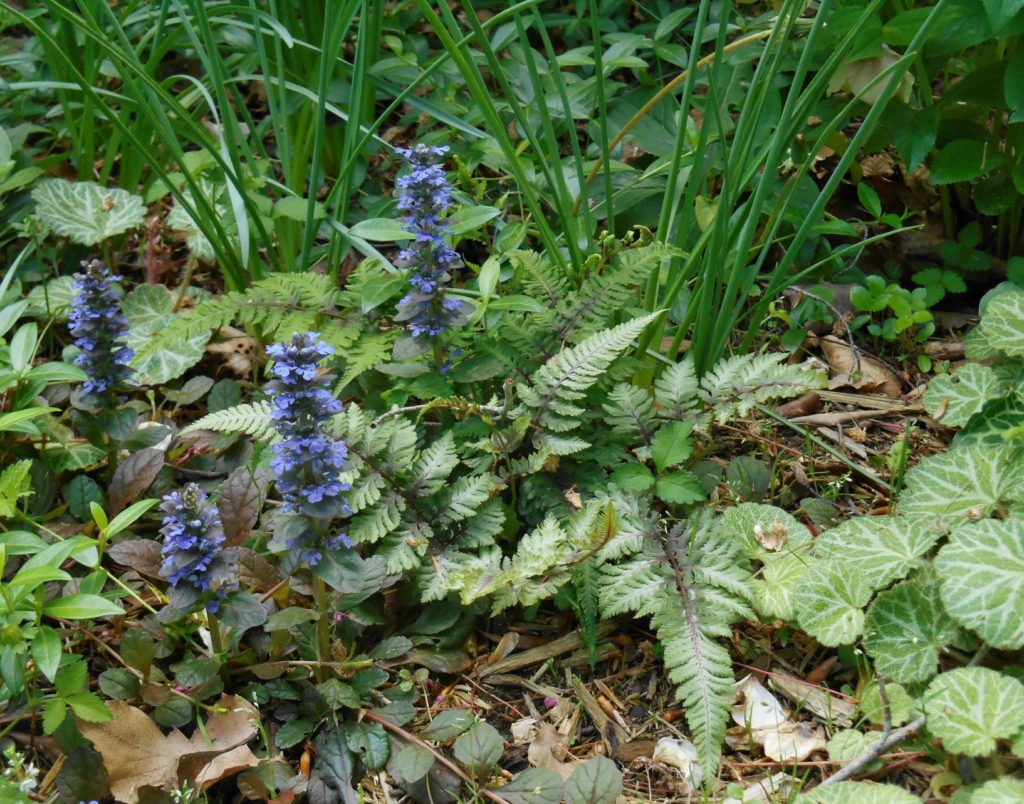Ornamental Perennials Every Master Gardener Should Know
Perennial plants feature prominently in most gardens. They may be evergreen or deciduous, have showy flowers or may be grown mostly for their foliage. Some steal the spotlight for only a few weeks while others remain productive over several months. Flowering perennials, whether native or not, help support a variety of pollinating insects. Those that produce seeds may support birds long into the winter.
Plants readily available in the nursery trade are most likely hybrids or named cultivars of specific species within a larger genus. Although there are many variations in bloom color, plant form, leaf size and color, and season of bloom, the plants within a genus have more in common than characteristics that separate them. This is not intended to be an exhaustive list and will not cover native perennials not available in the nursery trade. It is merely a starting point for a lifetime’s learning about ornamental plants.
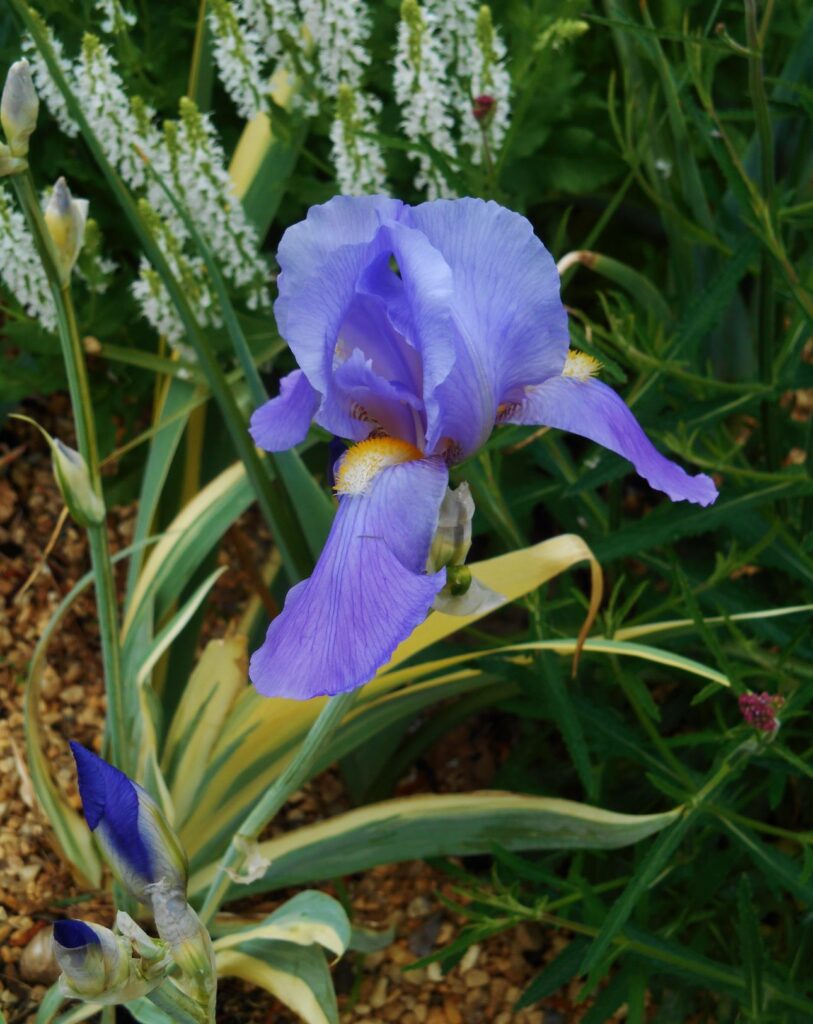
Iris pallida is a species Iris popular in Europe that colonists brought with them to Virginia. It is common now in our area. The roots of Iris pallida are dried and ground to make Orris root powder. Irises grow very well with most herbs, and some sources class this species of Iris as an herb. There are over 300 species in the Iris genus, plus many more hybrids and cultivars.
Evergreen Perennials
Dianthus hybrids, Carnations, Cottage Pinks
Echeveria spp., Mexican Rosettes
Helleborus spp., Hellebores, Lenten Rose, Christmas Rose
Heuchera spp., Coral Bells
Iris spp.,Iris
Sedum spp. Stonecrop
Sempervivum tectorum, Hens and Chicks
Stachys byzantina, Lamb’s Ears
Yucca spp., Adam’s Needle
Deciduous Perennials
For Sun
Agastache spp. Hummingbird Mint
Coreopsis spp., Coreopsis, Tickseed
Echinacea spp. and hybrids, Coneflower
Geranium maculatum, Cranesbill Geranium, Wild Geranium
Hibiscus spp., Hibiscus (some species are hardy, others tender in our area.)
Lantana camara, Lantana (This is a type of Verbena, and only some varieties are hardy in our area.)
Paeonia hybrids, Peony
Rudbeckia spp., Black-eyed Susan, Coneflower
Salvia spp. , Salvia, Sage
Solidago spp., Goldenrod
Verbena spp. and hybrids, Verbena, Vervain
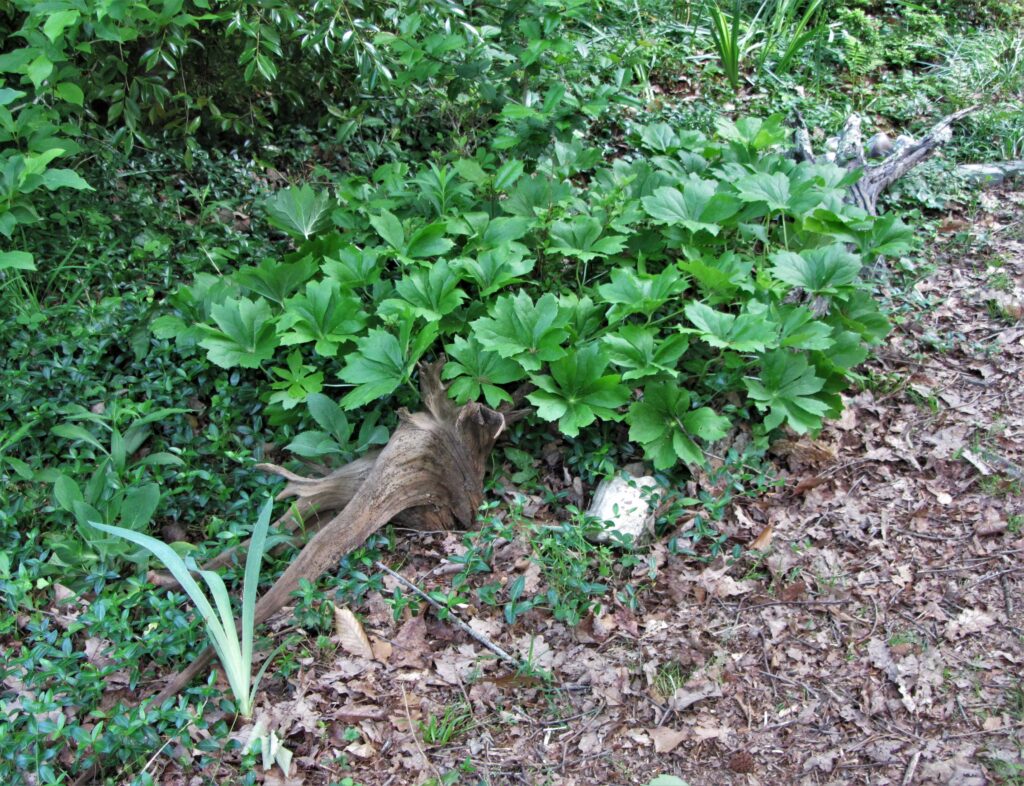
Mayapple, Podophyllum peltatum, grows into a dense ground cover each spring. Flowers and fruits form beneath its large leaves. This is an ephemeral that disappears by mid-summer.
For Shade
Aquilegia canadensis, Eastern Columbine
Begonia grandis, Hardy Begonia
Dicentra spp., Bleeding Heart, Dutchman’s Breeches
x. Heucherella, Foamy bells (evergreen in some climates)
Hosta spp. and hybrids, Hosta, Plantain Lily
Podophyllum peltatum, Mayapple, Mandrake
Polygonatum biflorum, Solomon’s Seal
Tiarella cordifolia, Foamflower
Perennial Ground covers
Ajuga reptans, Ajuga, Bugleweed
Carex spp. and hybrids, Sedge
Lamium maculatum, Spotted Deadnettle
Liriope spp., Lily Turf, Monkey Grass
Ophiopogon planiscapus, Mondo Grass
Pachysandra spp., Allegheny Spurge, Pachysandra
Saxifraga stolonifera, Strawberry Begonia
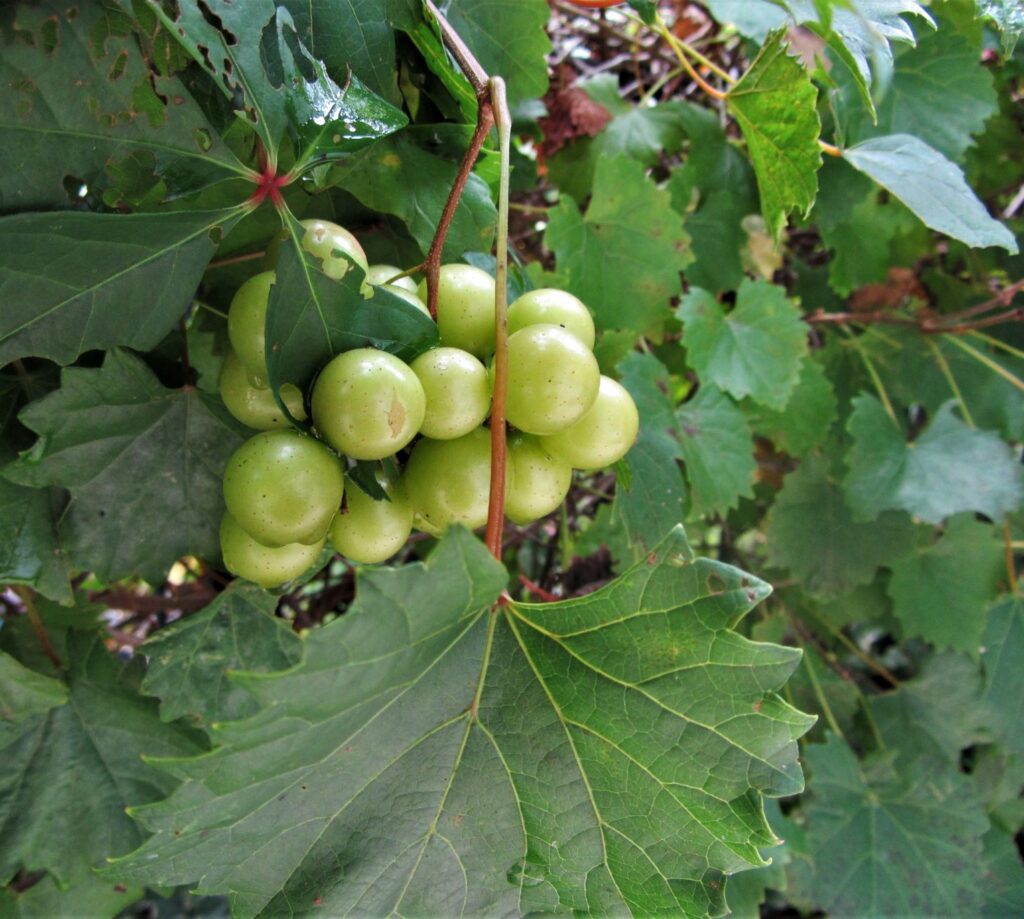
Muscadine grapes, Vitis rotundifolia, may be grown from seeds saved from delicious muscadine grapes varieties native in our area. Virginia Creeper grows here with the grapes.
Vines
Lonicera flava, L. sempervirens, Native Honeysuckle, Coral Honeysuckle
Vitis spp., Wild grape
Parthenocissus quinquefolia, Virginia Creeper
Clematis spp. and hybrids, Clematis, Virgin’s Bower
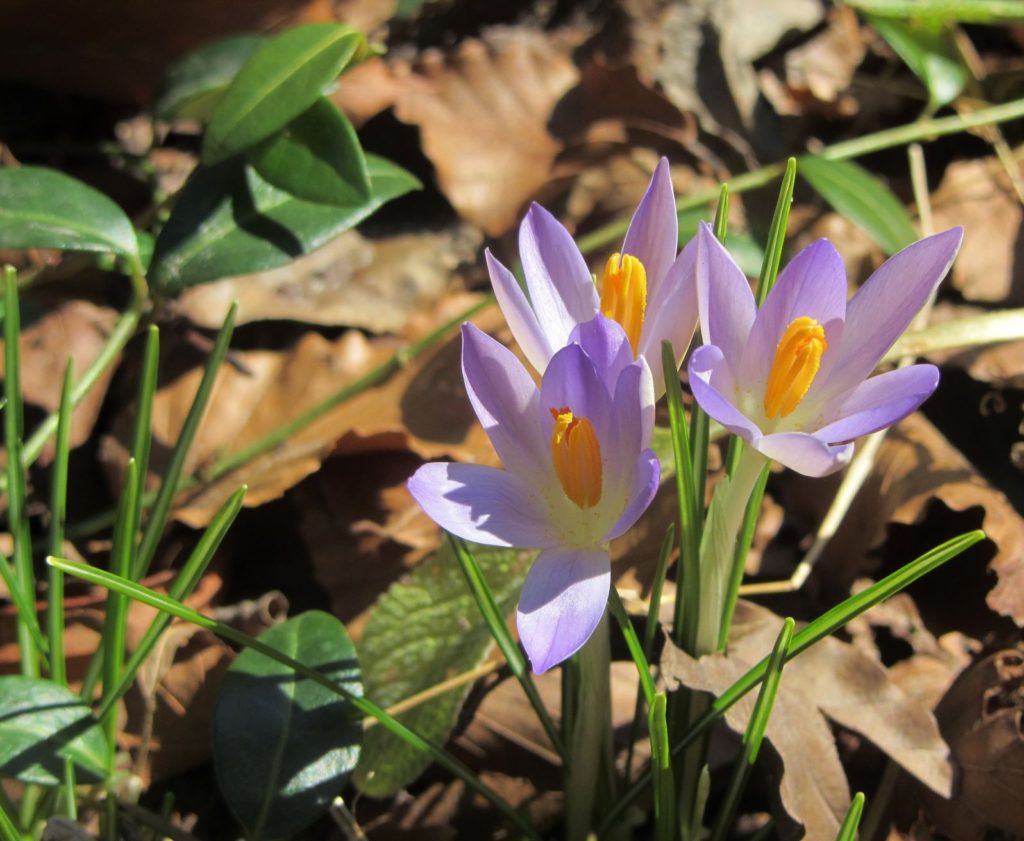
Crocus tommasinianus is a species that squirrels don’t eat and deer rarely graze.
Geophytes (bulbs) for Spring
Camassia spp., Quamash, Wild Hyacinth
Crocus spp. Crocus
Galanthus spp., Snowdrop
Hyacinthus orientalis, Dutch Hyacinth
Hyacinthoides hispanica, Spanish Bluebells, Wood Hyacinth
Muscari spp., Grape Hyacinth
Narcissus ssp. and hybrids, Daffodils, Jonquils, Narcissus, Paperwhites
Tulipa spp. and hybrids, Tulip

Calla lilies are generally hardy to Zone 7. Start a tuber this spring and enjoy the plant for years to come.
Geophytes (bulbs) for Summer
Some of these are tender perennials and should be overwintered indoors.
Alocasia spp. and hybrids, Elephant Ear
Caladium bicolor, Elephant Ear, Caladium
Canna hybrids, Canna Lily
Colocasia esculenta. and hybrids, Elephant Ears
Lilium hybrids, Lily
Lycoris spp., Spider Lily, Hurricane Lily
Zantedeschia spp. and hybrids, Calla Lily
Zephyranthes drummondi, Rain Lily, Prairie Lily
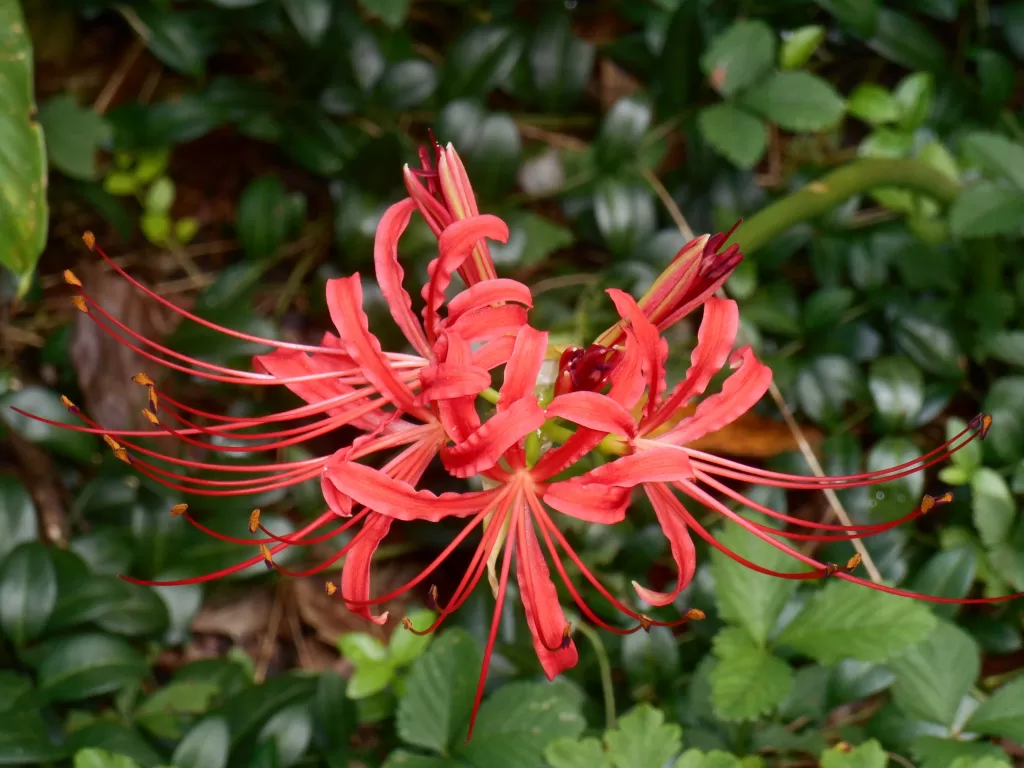
Lycoris radiata blooms in August in September, often after heavy rain, offering nectar to hummingbirds before their fall migration.
All photos by E. L. McCoy


